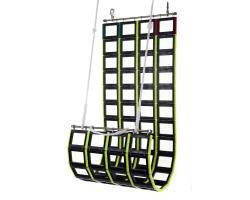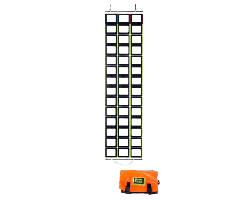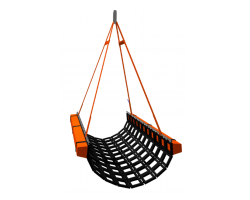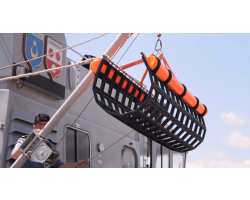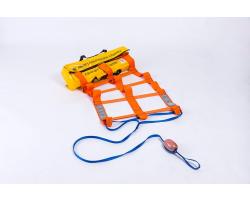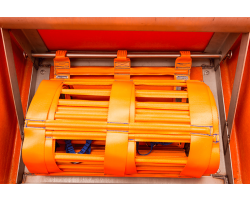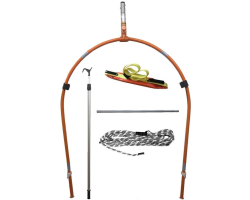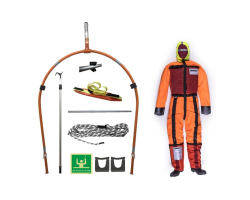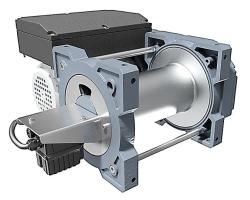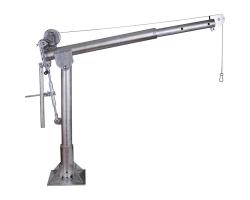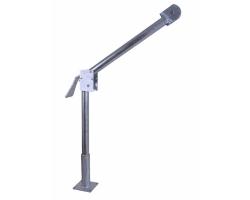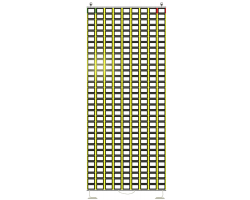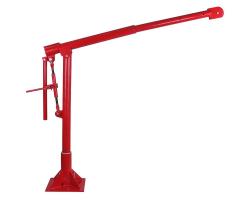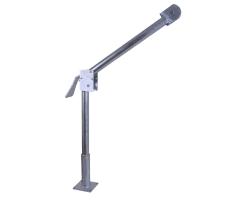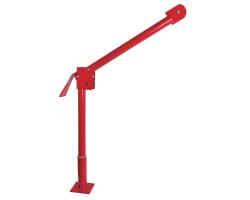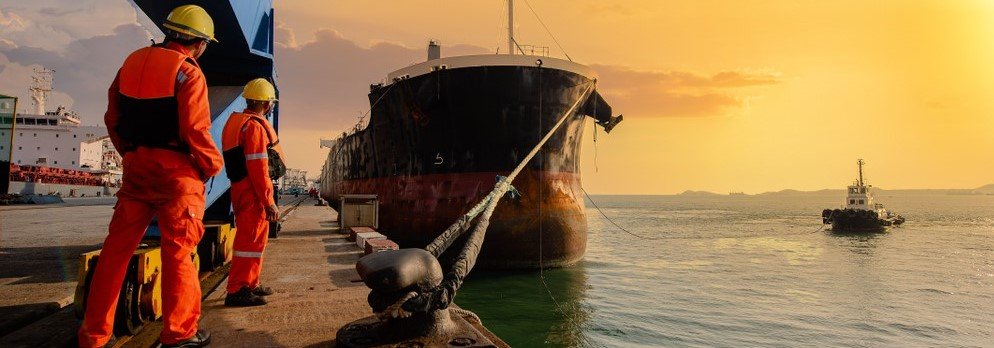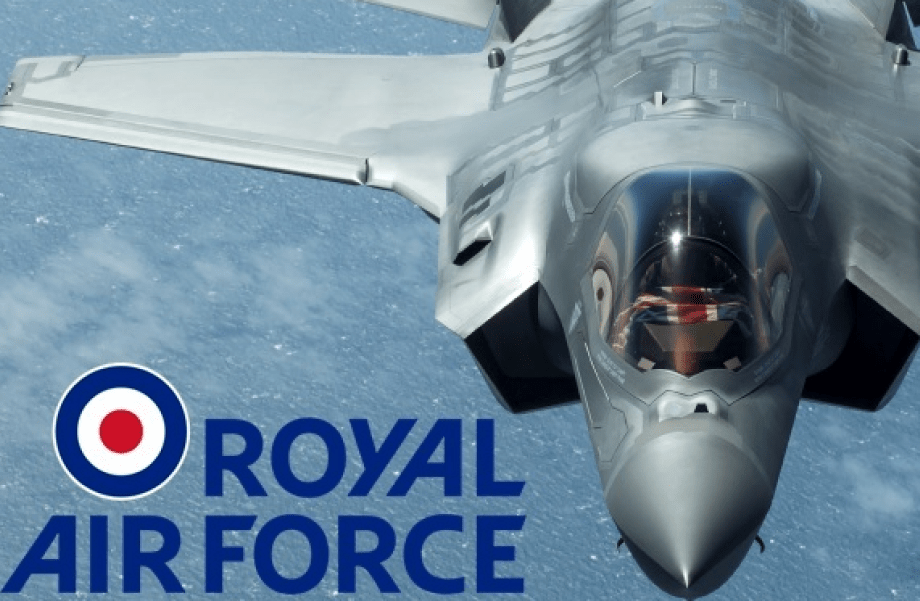Creating a Culture of Maritime Safety: Minimise Risks Aboard your Vessel with Man Overboard Equipment.
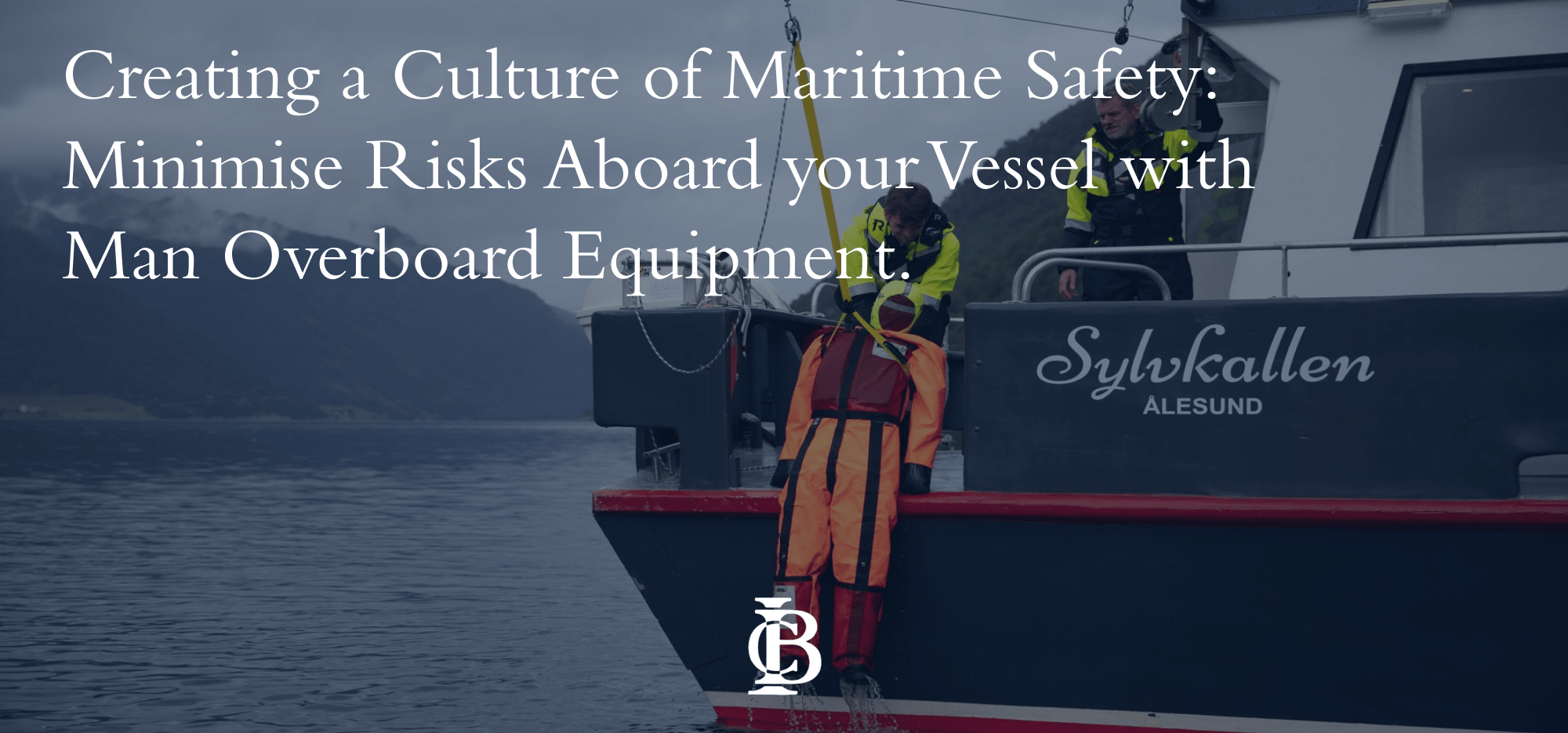
Man Overboard! The Dangers of MOB Situations
Man Overboard (MOB) situations present a potentially life-threatening risk during various maritime activities, encompassing both commercial operations and recreational pursuits. Whether it involves working on fishing vessels, cargo ships, offshore platforms, or engaging in leisurely boating, the potential for someone to fall overboard is ever-present.
In commercial maritime settings, such as the fishing industry, the risks associated with MOB incidents are particularly prevalent. The nature of the work exposes crew members to harsh weather conditions, unstable surfaces, heavy equipment, and swift movements, increasing the likelihood of accidents resulting in individuals being swept off the vessel. The consequences of such incidents can be disastrous, not only for the victim but for the entire crew, as the loss of a team member can cause significant emotional distress and disrupt operations.
Similarly, in leisure maritime activities, the risks of MOB situations should not be underestimated. Whether it's a small pleasure craft, a sailboat, or a recreational fishing boat, individuals onboard can be subjected to unexpected movements, unstable footing, or rough sea conditions. Factors such as sudden gusts of wind, uneven surfaces, or excessive crowding can contribute to accidental falls into the water. Even strong swimmers can find themselves in perilous situations due to the shock of the fall, cold water temperatures, or the inability to climb back onto the vessel unassisted.


The dangers associated with MOB incidents extends beyond the immediate risk of drowning. The open water presents additional challenges such as hypothermia, exhaustion, disorientation, secondary drowning, and the potential for injury caused by waves, currents, or colliding with a ship or vessel. As such, the urgency of rescuing a person in the water cannot be overstated, as time is a critical factor in ensuring their survival during MOB situations.
MOB Incidents: Taking Steps to Ensure Maritime Safety
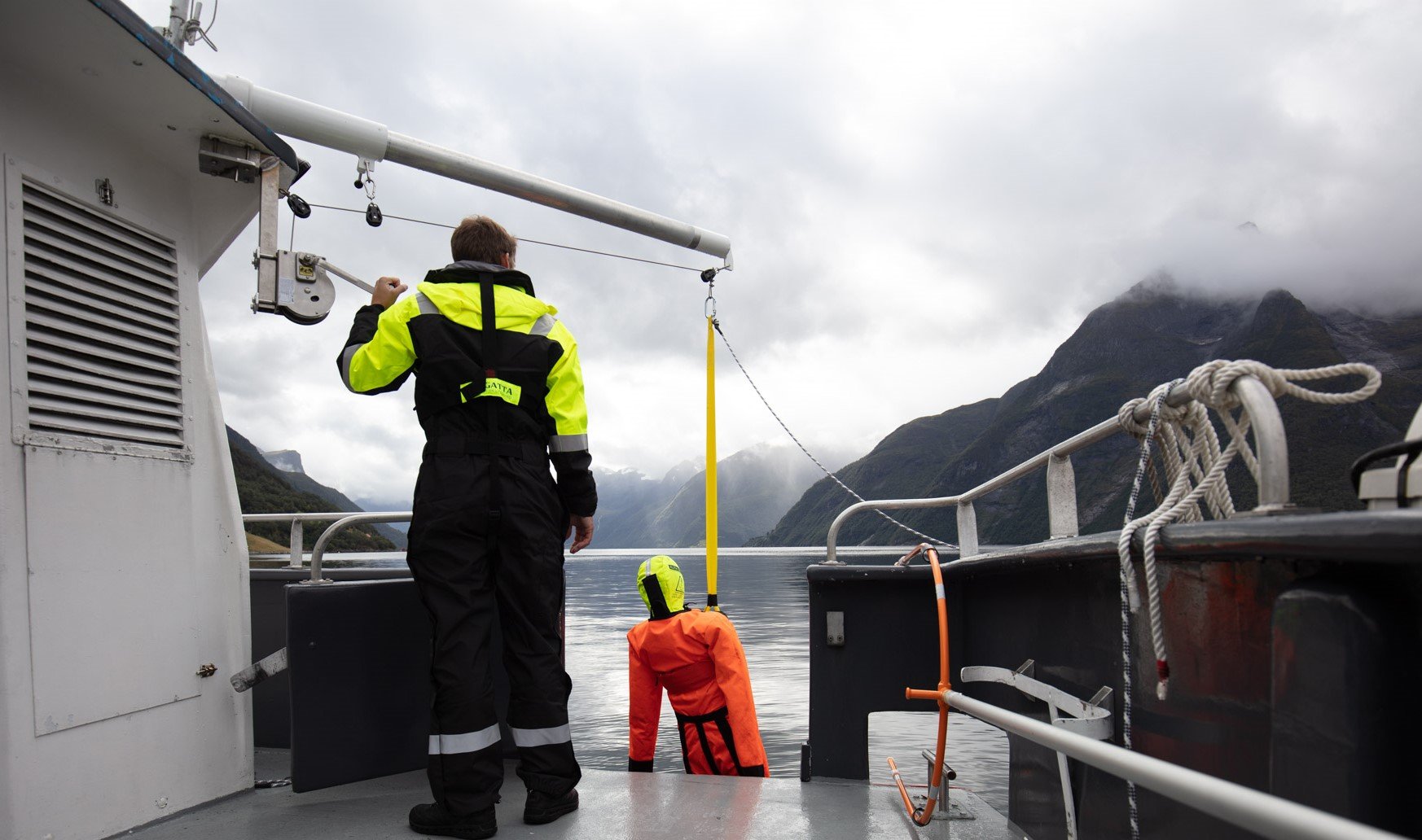
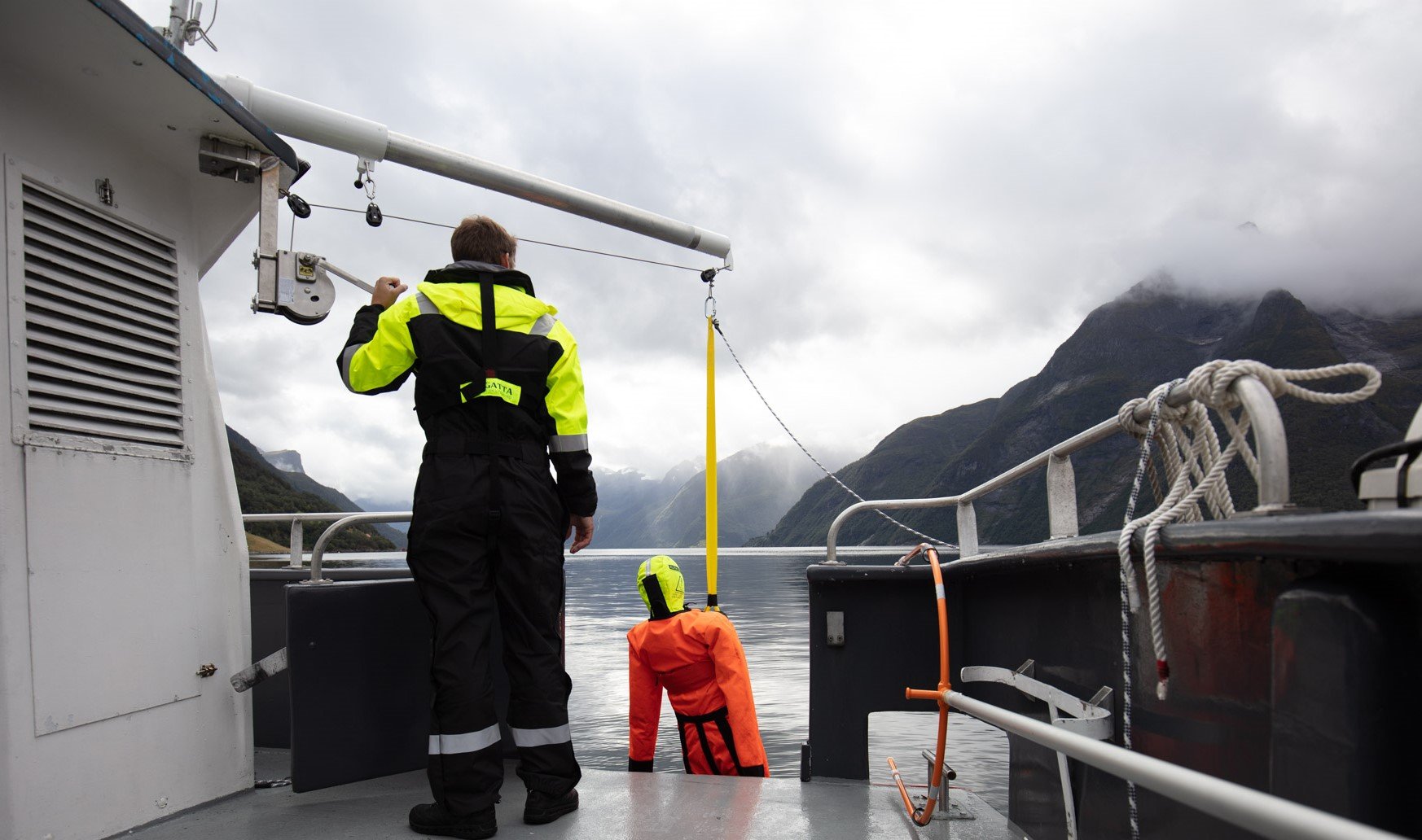
It is essential for both commercial and leisure maritime operators, as well as individuals partaking in such activities — whether commerical or leisure, to recognise and address the inherent dangers of MOB situations. This entails implementing appropriate marine safety protocols; such as conducting thorough training for crew regarding emergency procedures, and of course, equipping vessels with reliable rescue equipment specifically designed for efficient man overboard retrievals.
By prioritising such safety measures, and maintaining a constant awareness of risks during maritime activities, both individuals and collective groups (such as teams and crews) can significantly reduce the occurrence of MOB incidents and enhance the chances of successful rescues when man overboard emergencies arise!
As for this article, we're focusing on Man Overboard equipment.
Man Overboard Equipment: A Range of Essential Tools for MOB Retrieval
Man Overboard (MOB) equipment plays a crucial role in ensuring the safety of individuals on vessels and ships. These essential tools and devices are specifically designed to facilitate efficient rescues and increase the chances of successfully retrieving someone who has fallen overboard. Several types of equipment, including Man Overboard Cradles, Scramble Nets, Emergency Ladders, and other equipment such as Rescue Slings, & Davits, are utilised to tackle the unique challenges posed by MOB situations — and ultimately, retrieving the casualty safely from the water, where further medical care can be performed if needed
So, lets take a closer look at these types of MOB equipment!
Man Overboard Cradles: MOB Cradles are invaluable man overboard equipment as they provide a secure and stable platform for hoisting individuals out of the water. These MOB Recovery devices combine various techniques, including 'parbuckling' and principles of leverage with specialised designs such as a non collaspable scoops and hauling lines. Allowing the rescuer to utilise a mechanical advantage; exerting less force, whilst accomplishing the necessary actions to facilitate a safe and efficient MOB rescue — even onto vessels with high freeboard, in some cases.
Jason's Cradle Standard MOB Retrieval System
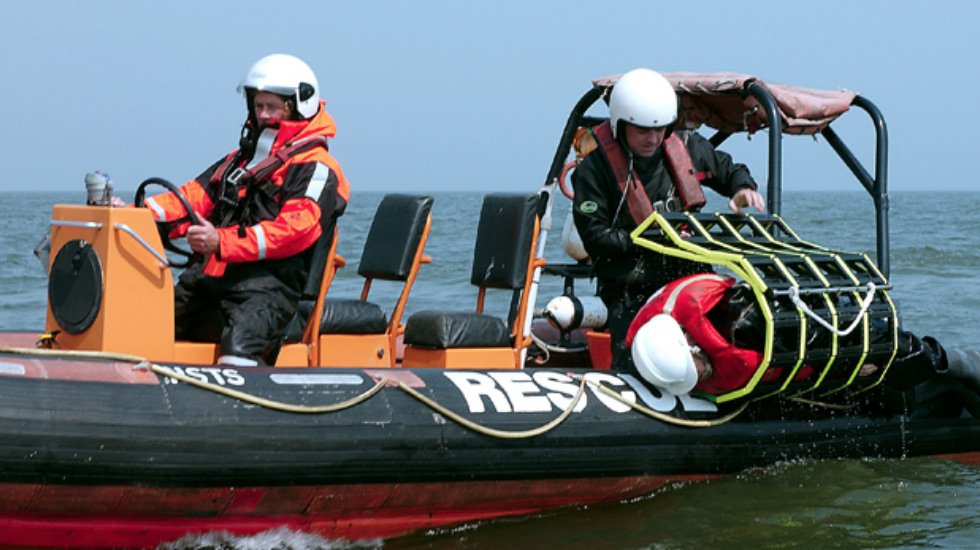
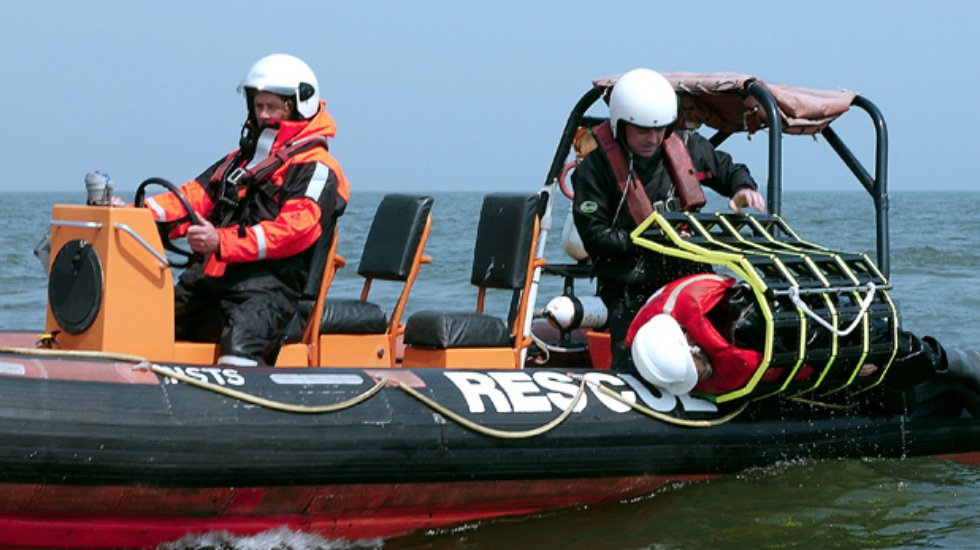
The Jason’s Cradle® is a world-recognised Man Overboard System. Having gained worldwide recognition as a crucial piece of equipment in the maritime industry — and SOLAS approved! As such, it is a vital MOB tool utilised by both commercial and military vessels alike! Whether deployed offshore, by rescue agencies, coastguards, passenger liners, superyachts, or RIB operators; the Jason's Cradle is the preferred choice for rescuing individuals who have fallen overboard. Its widespread adoption speaks to its effectiveness and reliability in man overboard retrieval scenarios.
The Jason's Cradle operates through a simple and efficient mechanism. The Standard Cradle is securely fixed to the deck or rail of a vessel, allowing for rapid deployment within seconds. When needed, the MOB cradle can be easily rolled up and stowed. Once deployed, the cradle forms a non-collapsible 'scoop', ready to receive the casualty. The individual is guided into the cradle headfirst, ensuring a secure position. Hauling lines and/or a strop are then pulled to close the loop, providing a safe enclosure for the casualty.
With a coordinated and methodical lift, the person is smoothly retrieved, rolled onto the deck in the medically preferred horizontal position, which is reccomended for post in-water retrieval medical care.
The Jason's Cradle is SOLAS-approved and compliant with the LSA code, Regulation I/1.2, ensuring its adherence to stringent safety standards. It offers three width options:
The FRC Kit, The Scramble Net, and The Recovery Stretcher, catering to different vessel requirements. With widths available up to 1.05m, the cradle accommodates vessels with up to 5m of freeboard. The use of the Jason's Cradle reduces the risk of "dry drowning," also known as Circum Rescue Collapse, and facilitates the recovery of horizontal casualties in the water to survival craft or the ship. Its construction features polythene HDPE and LDPE caps, 16 stainless steel link components, Delrin 100T High Tensile Plastic Rungs, and is tested with a breaking load of 3200k.
Supplied with snap shackles, the Jason's Cradle Standard MOB and has been tensile tested in excess of 1 metric tonne, ensuring its durability and reliability in critical rescue situations.
I.C. Brindle is an offical servicing partner of Jason's Cradle - get your MOB System serviced here!
Emergency Ladders: MOB Ladders are specially designed for quick and easy deployment in the event of a person falling overboard. These Man Overboard Recovery Ladders typically feature a compact and lightweight design. Allowing them to be easily accessed and extended to the water's surface from a vessel, or Fast Rescue Craft. MOB ladders provide a safe and stable means for able-bodied / un-injuredindividuals to climb back aboard the vessel independently, or with assistance.
Fibrelight Emergency & Self Recovery Ladders
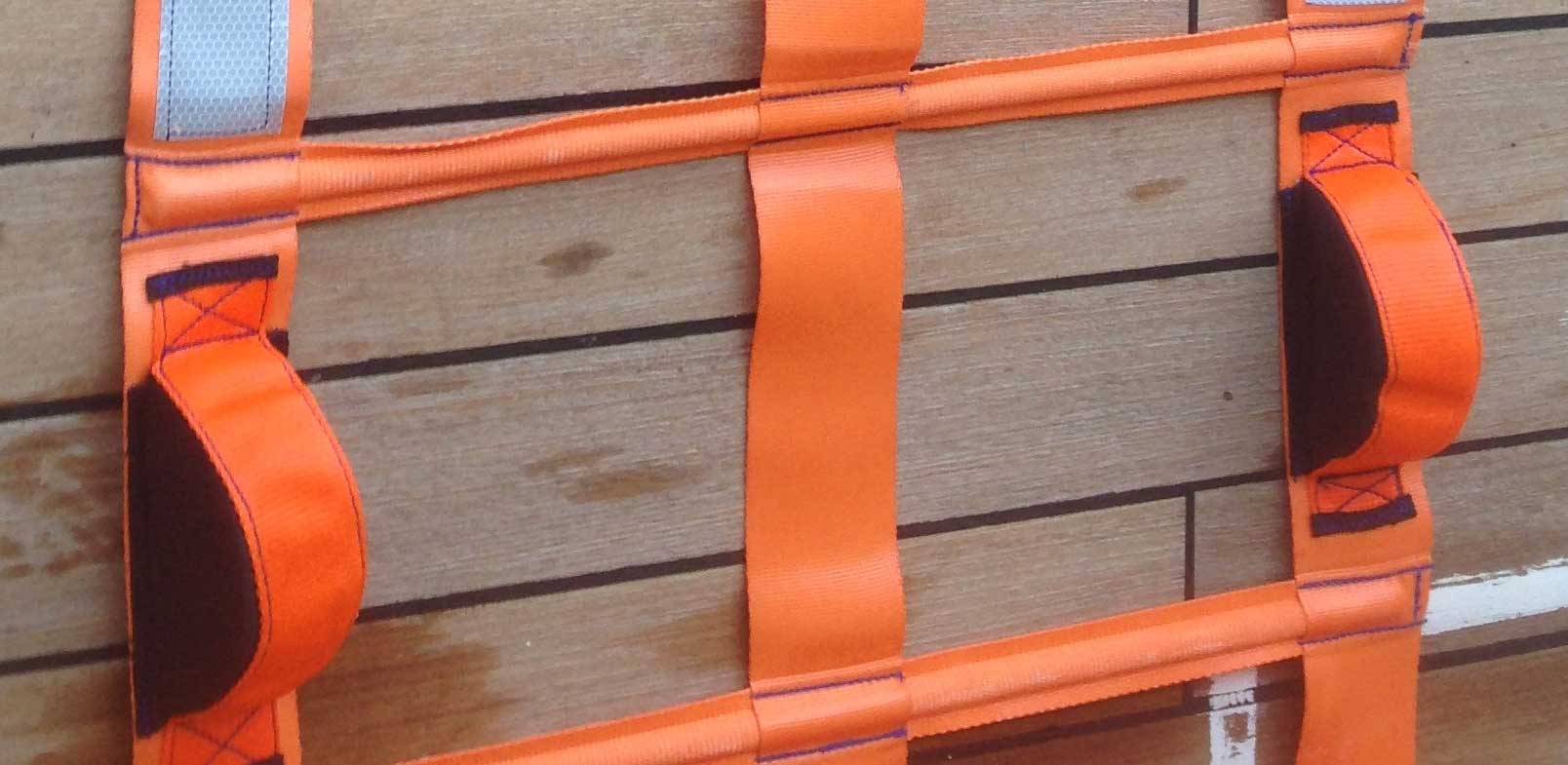
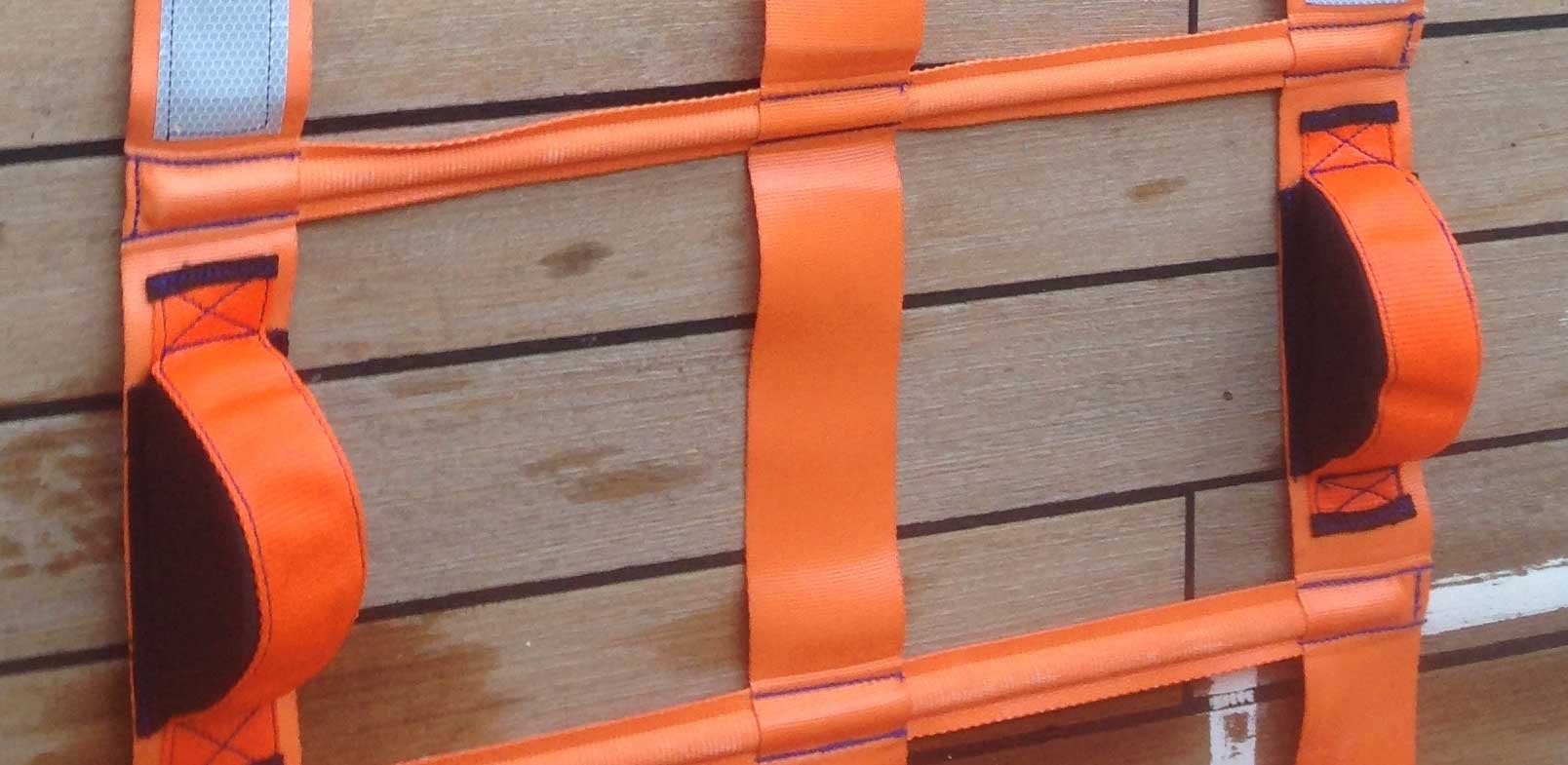
When it comes to ensuring the safety of individuals aboard various vessels, the Fibrelight Emergency Ladder stands as a tested and approved life-saving device. Not only is it compliant with SOLAS regulations, but it has also gained acceptance from the UK Maritime Authority (MCA), attesting to its reliability and adherence to stringent safety standards. Designed to be used on a wide range of vessels, including cruise liners, merchant ships, offshore support vessels, naval ships, and super yachts, the Fibrelight Emergency Ladder is a trusted solution for emergency situations.
The ladder's construction showcases its robustness and durability. Crafted using carbon fibre rods that are enclosed within flanged, tubular webbing. These webbed tubes are sewn into the material, forming a 90-degree weave pattern that creates a double thick pocket of secondary webbing. This design not only enhances the ladder's structural integrity but provides full support to the rods with the ladder's vertical members! To ensure its reliability under demanding circumstances, the Fibrelight Emergency Ladder has undergone rigorous testing. Successfully passing the ISO 799 strength test, with rungs enduring loads exceeding 900 kilograms and sustaining the load for one minute without any failures! This emergency MOB ladder's construction has been thoroughly tested and approved for factors such as thermal ageing, weathering, UV light exposure, oil resistance, and practical performance. These important tests prove that the fibrelight ladder is capable of withstanding challenging conditions — whilst delivering optimal functionality.
Building upon the success of the Fibrelight Emergency Ladder, this Fibrelight Self-Recovery Ladder is specifically crafted to empower casualties who have fallen overboard, enabling them to easily and independently climb back onto their vessels. Additionally, a white self-recovery ladder variant, tailored for use on super yachts, is available upon request, further expanding its versatility. Designed as a specialized life-saving device, this innovative Self-Recovery Ladder offers a crucial solution for fishermen operating vessels with limited crews, or working alone.
The Fibrelight Self-Recovery Ladder is a testament to the commitment to safety and functionality, drawing upon the solid foundation of the signature Fibrelight Cradle & Ladders design, by utilising carbon fibre rods enclosed within flanged, tubular webbing. This construction ensures durability and structural integrity, crucial for life-saving situations. By providing a reliable means for fishermen to regain access to their vessels, even with limited crew or single-handed operations, this ladder enhances their safety and peace of mind on the water.
One of the standout features of the Fibrelight Self-Recovery Ladder is its focus on independence! Enabling casualties who have fallen overboard to take control of their own rescue, eliminating the need for additional assistance or reliance on external rescue operations. This self-reliance not only saves valuable time but also enhances the chances of a successful recovery. By providing a secure and easily accessible pathway back onto the vessel, the ladder empowers individuals to regain their position onboard swiftly and efficiently.
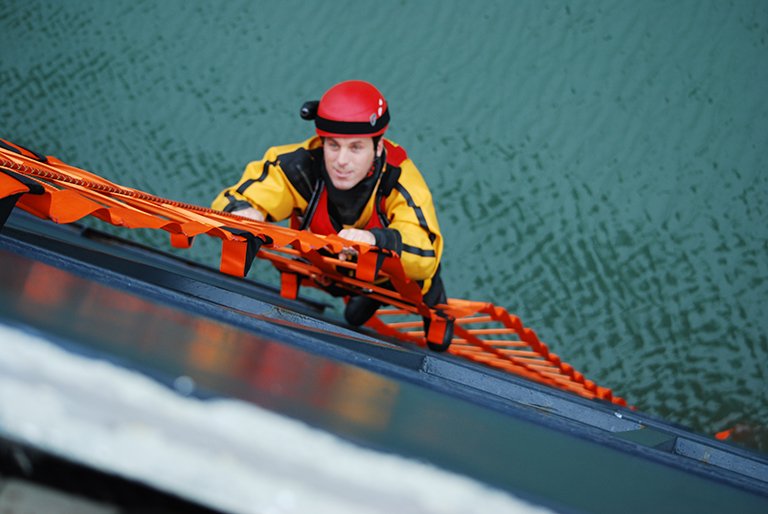
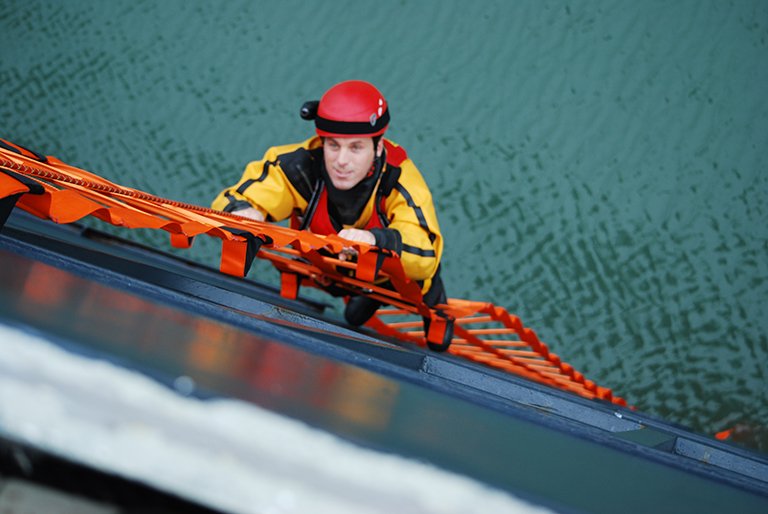
Rescue Slings & Davits: Water rescue slings and MOB harnesses stand as user-friendly essentials in the realm of Man Overboard (MOB) recovery equipment. Designed to facilitate swift and efficient MOB retrievals, these versatile tools excel at rescuing individuals at a distance or without necessitating entry into the water, making them invaluable even for minimal crew sizes. Water rescue slings and MOB harnesses offer increased adaptability, allowing seamless integration with other MOB equipment like davits, and even cradles for a medically perfered horizontal recovery of a casualty. This advantageous compatibility overcomes common obstacles such as challenging freeboard heights, rescuer fatigue, limited crew numbers, and the complexities involved in retrieving an inert body from the water.
SB Rescue Sling Man Overboard System
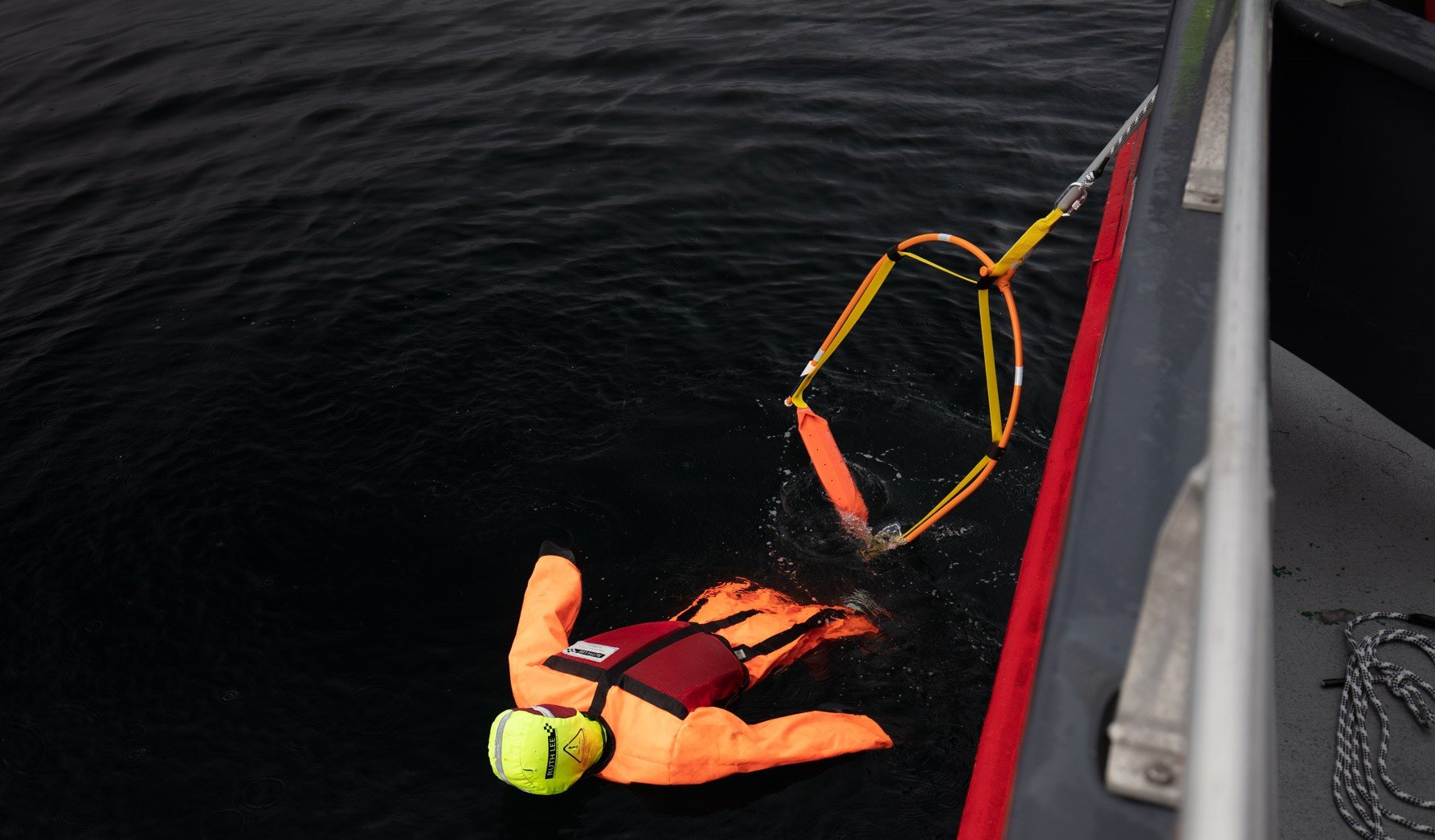
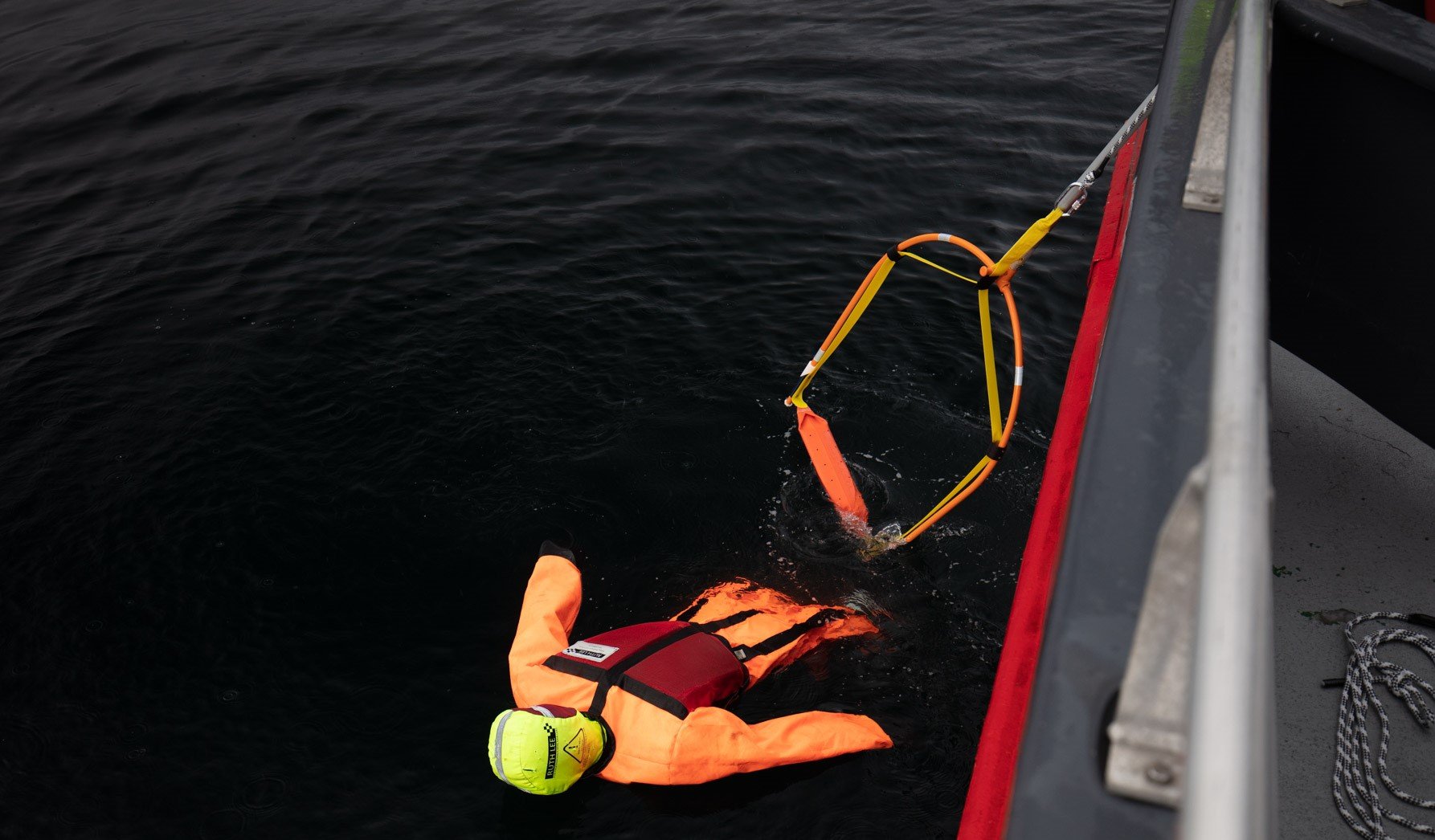
The SB Rescue Sling is specifically designed for 'one-person operation' man overboard recoveries. Engineered to facilitate casualty retrieval without the need for the rescuer to enter the water. This innovative system eliminates the need for the rescuer to enter the water, making it highly versatile and suitable for various scenarios. Whether it's a boat rescue, retrieval in steep-sided canals or lakes, or even long-distance MOB situations, the SB Rescue Sling excels in delivering effective results.
With its user-friendly design, the SB Rescue Sling MOB Retrieval System enables efficient operation by a single person. Weighing only 3 kg, it strikes the perfect balance between portability and functionality. Rescuers can easily transport the lightweight system without compromising its effectiveness. This feature plays a vital role in reducing response time during critical situations, ensuring a rapid and precise rescue process.
To enhance its capabilities further, the SB Rescue Sling is compatible with the SB Rescue Telescopic Davit. This combination provides additional support and versatility during Man Overboard rescue missions. The SB Rescue Davit serves as an 'auxiliary tool', offering stability and facilitating smoother operations. The integration of the sling and davit creates a comprehensive man overboard system that maximizes safety and reliability in diverse marine environments.
The SB Rescue Sling and SB Rescue Davit have been meticulously engineered to meet the demanding requirements of modern man overboard recoveries. The system's design prioritises ease of use, efficiency, and effectiveness, ensuring that rescuers can swiftly and safely retrieve individuals in distress — and making it the ideal Man Ovevroard Solution for vessels with minimal crews. By eliminating the need for the rescuer to enter the water, the SB Rescue Sling enables a controlled and streamlined approach to man overboard rescues, minimising risks during an MOB rescue operation, and increasing the chances of a successful retrieval.
Conclusion: Fostering a Culture of Safety through Man Overboard Equipment
Safety should always be at the forefront of our minds when engaging in maritime activities, whether it's for commercial purposes or leisurely adventures. The unpredictable nature of the open water means we must be prepared for any eventuality, especially when it comes to man overboard (MOB) incidents. By fostering a culture of safety within the maritime community and prioritizing proactive prevention and preparedness, we can significantly minimize the risks associated with MOB incidents.
Acknowledging Potential Dangers:
The first step in enhancing safety at sea is acknowledging the potential dangers and risks involved. MOB incidents can happen suddenly and without warning, endangering the lives of individuals on board. It is crucial to understand the gravity of such situations and the profound impact they can have on both the victim and the entire crew. By recognizing the severity of MOB incidents, we can instill a sense of urgency and importance in implementing effective safety measures.
Taking Necessary Precautions:
Prevention is always better than cure, and this holds true in the maritime realm as well. Taking necessary precautions to prevent MOB incidents is vital in ensuring the safety of all individuals on board. This includes implementing rigorous safety protocols, providing comprehensive training to crew members, and adhering to industry best practices. Regular safety drills and exercises should be conducted to familiarize everyone with emergency procedures, ensuring a swift and coordinated response in case of an MOB situation.
Investing in Suitable Safety Measures:
Equipping vessels with suitable Man Overboard equipment is an essential aspect of minimising risks and enhancing safety. The availability of reliable and innovative MOB equipment, such as the Jason's Cradle®, the Fibrelight Emergency Ladder and Self-Recovery Ladder, alongside I.C. Brindle's SB Rescue Sling; offers a lifeline for individuals in distress. By investing in these man overboard systems, vessel operators demonstrate their commitment to the safety and well-being of their crew members and passengers.
These safety measures go beyond mere compliance with regulations; they showcase a proactive approach to safeguarding lives at sea. SOLAS approval and acceptance from maritime authorities such as the MCA validate the effectiveness and reliability of such equipment, instilling confidence in the equipment's ability (alongside the operators) to handle MOB situations effectively.
Promoting a Culture of Safety:
Creating a culture of safety within the maritime community is a collective effort that requires the involvement and commitment of all stakeholders. It starts with fostering a mindset that prioritizes safety above all else. Crew members, operators, and passengers must be educated about the risks associated with MOB incidents and the importance of adhering to safety protocols and utilizing proper safety equipment.
Collaboration between industry organisations and maritime safety brands and equipment suppliers, regulatory bodies, maritime professionals is crucial in driving this culture of safety forward. Sharing best practices, conducting safety workshops and training programs. Promoting awareness campaigns can contribute to a widespread understanding of the significance of safety measures and the value they bring to the maritime community.






